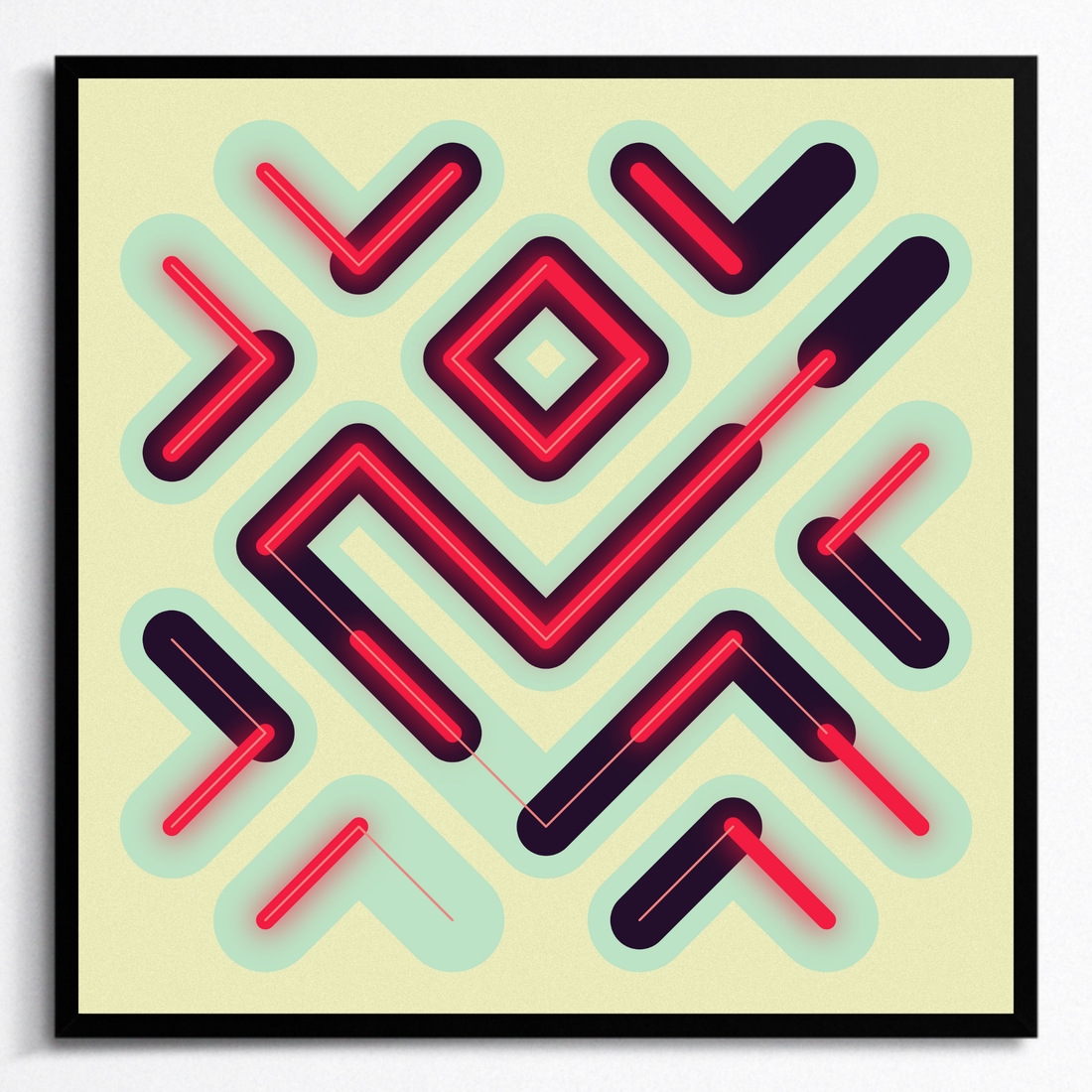
The Creation of "Neon Shipibo"
In this short post I am going to take you step by step through the creative process behind
the works in the "Neon Shipibo" collection.
This collection, exactly like "Graphene", is part of an artistic current called "Long Form Generative Art",
a type of creative programming that came into light during the NFT craze of 2020-21.
This is not AI. Every algorithm is written painstakingly line by line and requires a deep understanding of geometry, noise manipulation, object and class oriented programming and much more.
This particular type of artistic expression can be achieved through various programming languages
and libraries, the most widely used are p5.js, my library of choice built on JavaScript, and Processing, an environment made in Java.
Other libraries and programming languages used for this kind of work are 3D.js, C# and Python.
You can find p5.js and the Processing foundation here:
https://processing.org/
All the artworks created in Long Form Gen Art are basically Algorithms.
The artist's objective is to create a "system" that behaves following pre determined rules.
You will understand more specifically what I mean later in this post.
Now back to the "Neon Shipibo" collection...
Its main inspiration is the Shipibo art of the amazon, which is heavily geometric and repetitive with an almost psychedelic fashion.
I wanted to see if could recreate some of its patterns in a more "modern" lens and the concept of "Truchet Tiles" came to mind.
This is a simple idea that can have very complex outputs, so let's walk through it:
Step 1:
Create a grid...

Step 2:
Apply simple geometric components like straight or curved lines to every spot of the grid...


(example with straight and curved lines)
Step 3:
Apply randomization to change how the components are rotated.
We can really start to see the formation of patterns now when we remove the grid.


(rotated straight lines, with and without grid)


(rotated curved lines)
Step 4:
add more components and randomize where they are shown in the grid...


(different geometric components rotated and selected randomly, with and without grid)
Great!
Now we have a pattern made of Trouchet tiles, but what happens if we want to make it more psychedelic in nature? How can we take these building tools and make a richer pattern without adding more elements?
There's quite a few ways we can achieve that
We can start by duplicating our pattern with different stroke colors and weights adding each 'layer' on top of the previous one, like this:


(our trouchet patter multi layered, with and without grid)
Then we can rotate or swap the elements in one or more of the layers.
Let's try for example to keep the first black layer exactly the same and to both rotate and swap the elements in the gray and white layer!
The first layer still look like this:

The grey middle layer would look like this:

And the highest layer would look like this:

Now we just need to add them on top of each other!


(mult layered trouchet pattern with variations, with and without grid)
And there you go, these are the building blocks of "Neon Shipibo"!
Playing with the grid divisions, layers and shapes we can get quite a wide range of patterns:




The finished algorithm contains quite a bit more details: the choice of palettes, a secondary grid with cuts, shadows, etc
But these steps show the basic idea for how the collection was created.

